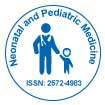Understanding the Physical Compatibility of these Neonatal Drugs is Crucial for Ensuring Safe and Effective Treatment
Received Date: Apr 02, 2024 / Published Date: Apr 30, 2024
Abstract
ticularly those born prematurely or with health complications. The neonatal period, defined as the first 28 days of life, is characterized by rapid physiological changes, making drug therapy both challenging and essential. The pharmacokinetics and pharmacodynamics in neonates differ significantly from older children and adults due to immature organ systems, especially the liver and kidneys, which are responsible for drug metabolism and excretion. Common drug categories used in neonatology include antibiotics, used to combat infections; surfactants, which are essential for the treatment of respiratory distress syndrome in premature infants; and anticonvulsants for managing neonatal seizures.
Citation: Nancy P (2024) Understanding the Physical Compatibility of theseNeonatal Drugs is Crucial for Ensuring Safe and Effective Treatment. NeonatPediatr Med 10: 413.
Copyright: © 2024 Nancy P. This is an open-access article distributed under theterms of the Creative Commons Attribution License, which permits unrestricteduse, distribution, and reproduction in any medium, provided the original author andsource are credited.
Share This Article
Recommended Conferences
42nd Global Conference on Nursing Care & Patient Safety
Toronto, CanadaRecommended Journals
Open Access Journals
Article Usage
- Total views: 411
- [From(publication date): 0-2024 - Apr 01, 2025]
- Breakdown by view type
- HTML page views: 238
- PDF downloads: 173
